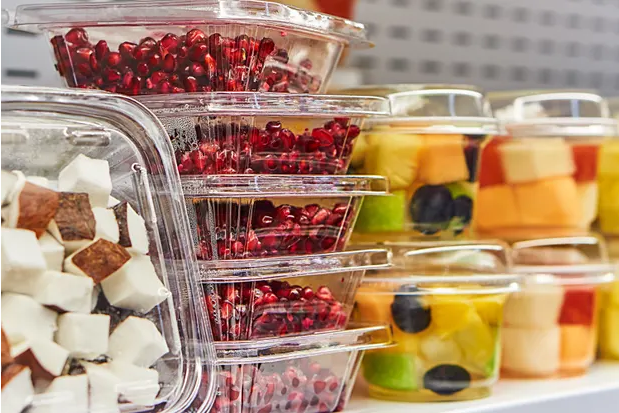Food packaging has come a long way over the years. It has evolved from being functional to becoming an important design element. Today, food packaging protects food from contaminants and spoilage, showcases the brand, and entices consumers to buy the product. Food packaging materials must meet certain requirements to be effective, such as resistance to moisture and gas permeation. In addition, environmental concerns have become increasingly important, with many consumers looking for sustainable packaging options. This article will explore the different roles that food packaging plays, common materials used for food packaging, and ways to make food packaging more environmentally friendly.
What are the different types of food packaging and their roles in the food industry
There are many different types of food packaging systems from PWR Pack, each with its own unique role in the food industry. One of the most common types of packaging is cardboard boxes. When it comes to packaging, cardboard boxes are some of the most versatile and widely used options. They come in a variety of sizes and shapes, making them ideal for everything from shipping small items to storing large products. Cardboard boxes are also relatively inexpensive, which makes them a popular choice for businesses of all sizes. In addition, cardboard is recyclable, which means it can be reused or recycled instead of being thrown away. With all of these benefits, it's no wonder that cardboard boxes are such a popular choice for packaging.
Another type of food packaging is plastic wrap. Plastic wrap is a type of food packaging made from thin sheets of plastic. It is used to cover food items and keep them fresh. Plastic wrap is available in different thicknesses and sizes. It can be clear or colored. Some types of plastic wrap are coated with a layer of foil or wax. Plastic wrap is commonly used for packaging meat, poultry, fish, and cheese. It can also be used to package fresh fruits and vegetables. Plastic wrap is typically disposed of after use. However, some types of plastic wrap are reusable.
Glass jars and containers are also commonly used for food packaging. Glass is a good material for storing food because it does not absorb flavors or odors. Glass containers can be sealed tightly, which helps keep food fresh for longer periods. Jars and containers made from glass can also be reused multiple times, making them more environmentally friendly than disposable packaging materials.
The materials used for food packaging and their environmental impact
Carefully consider the environmental impact of the materials you use for food packaging. Plastics, while durable and relatively inexpensive, are a leading cause of marine pollution. Paper products can be recycled, but they require significant amounts of water and energy to produce. Glass is recyclable and doesn't pollute the environment. Still, it's also breakable and more expensive than other options. Choosing the right material for your food packaging needs is essential for reducing your footprint on the planet.
How to reduce the amount of waste generated by food packaging
While it's important to protect food from contamination, there are ways to reduce the amount of packaging waste we generate. One way to do this is to buy in bulk when possible. Buying larger quantities can help to reduce the amount of packaging material used, and it can also save money in the long run. Another way to reduce packaging waste is to choose products that use less packaging. This might mean buying loose fruits and vegetables instead of those that come in individually wrapped packages. Or it could mean choosing products with minimal packagings, like box-less cereal or unpackaged meats. By being conscious of the packaging materials we use, we can all help to reduce the amount of waste generated each day.
Alternatives to traditional food packaging materials
Traditional food packaging materials such as plastic wrap and Styrofoam containers have come under fire in recent years for their environmental impact. These materials are not biodegradable and often end up in landfills or as litter. As a result, many companies are searching for alternatives to these materials. One promising option is bioplastics, which are made from renewable plant sources and can be composted. Another possibility is paper packaging, which is recyclable and biodegradable. Finally, some companies are experimenting with edible packagings, such as fruit skin or chocolate. While these alternatives are not yet perfect, they offer a more sustainable option for food packaging than traditional materials.
In Conclusion:
Food packaging is an important part of the food industry, and it’s come a long way in terms of both functionality and environmental impact. However, there’s still room for improvement, and we hope this article has shown you some ways to reduce the amount of waste generated by your food packaging. If you have any other ideas or suggestions, please share them in the comments section below!




No comments:
Post a Comment